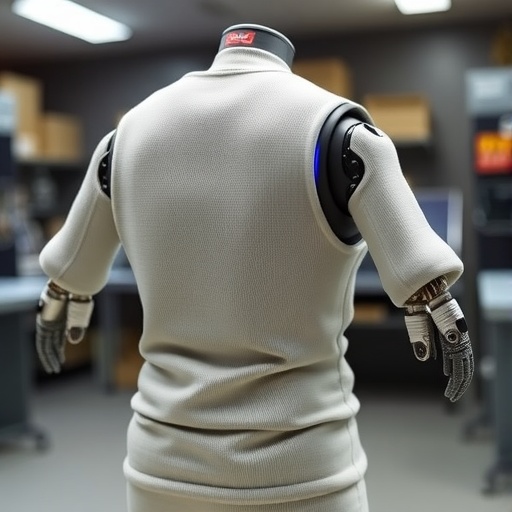
Credit: Broxton Bird, PhD, School of Science, Indiana University-Purdue University Indianapolis
INDIANAPOLIS — What caused the rapid disappearance of a vibrant Native American agrarian culture that lived in urban settlements from the Ohio River Valley to the Mississippi River Valley in the two centuries preceding the European settlement of North America? In a new study, researchers from Indiana University-Purdue University Indianapolis reconstructed and analyzed 2,100 years of temperature and precipitation data — and point the finger at climate change.
Employing proxies of prehistoric temperature and precipitation preserved in finely layered lake sediments, somewhat analogous to tree-ring records used to reconstruct drought and temperature, the IUPUI scientists have reported on the dramatic environmental changes that occurred as the Native Americans — known as Mississippians — flourished and then vanished from the Midwestern United States. The researchers theorize that the catastrophic climate change they observed, which doomed food production, was a primary cause of the disappearance.
"Abrupt climate change can impose conditions like drought. If these conditions are severe and sustained, as we have determined that they became for the Mississippians, it is virtually impossible for societies, especially those based on agriculture, to survive," said paleoclimatologist Broxton Bird, corresponding author of the new study. "From the lake records, we saw that the abundant rainfall and consistent good weather — which supported Mississippian society as it grew — changed, making agriculture unsustainable." Bird is an assistant professor of earth sciences in the School of Science at IUPUI.
This failure of their principal food source likely destabilized the sociopolitical system that supported Mississippian society, according to archeologist Jeremy Wilson, a study co-author. He is an associate professor of anthropology in the School of Liberal Arts at IUPUI.
"Archeologists have recognized that from 1300 onward, Mississippian villages started disappearing –one after the other — almost like lightbulbs in a string, but the question has always been 'why?,'" said Wilson. "Dr. Bird and his students have shown from the lake-sediment evidence that during the period known as the Little Ice Age, from 1300 to 1800, there was a profound change in climate to colder and drier conditions, which would have negatively impacted the growing of maize in and around Mississippian villages.
"It's important for us to understand how past civilizations coped with climate change as we encounter things like changing precipitation patterns and temperatures that appear to be rising around the world today."
As the Mississippians' culture waned, the IUPUI researchers found, there were lower temperatures and significantly less summer rainfall than during its rise. They attribute these changes to more El Niño-like conditions in the Pacific Ocean and cooling during the Little Ice Age, which altered atmospheric circulation such that moisture delivered to the Midwest was derived from the northwestern U.S. (Pacific and Arctic) instead of the Gulf of Mexico, as was the case during the Mississippians' rise. The longer transport distance of Pacific air masses during the Little Ice Age left less moisture available for rainfall in the Midwest, resulting in drought conditions that undermined agricultural production.
"Climate change had been previously postulated as one of the factors responsible for the disappearance of the Mississippians," Bird said. "What our research did was develop the highest-resolution record yet produced of rainfall in the midcontinental U.S. for the last 2,100 years, including the time frame from the beginning of the Mississippian period — about 1,000 years ago — to 500 years ago, when much of the lower Midwest was totally abandoned by these people. Our results strongly support climate change — drought, specifically — as a significant cause of the disappearance of Mississippians from the midcontinent through its impact on their ability to farm and produce food surpluses.
"Mississippians did not have irrigation and relied on rainfall to grow their crops. Modern agriculture in the Midwest corn belt likewise relies on rainfall with very little irrigation infrastructure, making us similarly vulnerable to drought," Bird said.
"Midcontinental Native American Population Dynamics and Late Holocene Hydroclimate Extremes" is published in Scientific Reports, an open access, peer-reviewed Nature research journal.
The sediment studied was from Martin Lake in northeast Indiana. Bird and Wilson are continuing their research at additional lakes, especially those adjacent to archeological sites, throughout the midcontinent.
###
Authors of the study, in addition to Bird and Wilson, are IUPUI assistant professor of earth sciences William P. Gilhooly III, former IUPUI graduate student Lucas Stamps and University of Minnesota Duluth paleoclimatologist and paleolimnologist Byron A. Steinman.
The study, which was a collaboration between the schools of science and liberal arts at IUPUI, was supported by funding from an IU Collaborative Research Grant from IUPUI and a Research Support Funds Grant from IU.
Media Contact
Cindy Fox Aisen
[email protected]
http://science.iupui.edu/
############
Story Source: Materials provided by Scienmag





